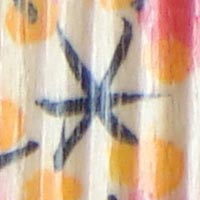Sony Cyber-shot DSC-T100 Review
Review Date: May 21st 2007
Author: Gavin Stoker
Leave a comment about this Review
|
Image Quality
All of the sample images in this Review were taken using the 8 megapixel mode, which gives an average image size of around 2.5Mb.
Noise
There are 7 ISO settings available on the Sony Cyber-shot DSC-T100 which you can select at any time if the camera is in the normal shooting mode. Noise wise, you start to loose edge definition at ISO 800, though shots are still usable at ISO 1600. I'd forget about ISO 3200 entirely unless in dire need, as images begin to resemble something closer to a brass rubbing than a photograph. Here are some 100% crops which show the noise levels for each ISO setting:
ISO 80 (100% Crop) |
ISO 100 (100% Crop) |
 |
 |
ISO 200 (100% Crop) |
ISO 400 (100% Crop) |
 |
 |
ISO 800 (100% Crop) |
ISO 1600 (100% Crop) |
 |
 |
ISO 3200 (100% Crop) |
|
 |
Sharpening
Here are two 100% Crops which have been Saved as Web - Quality 50 in Photoshop. The right-hand image has had some sharpening applied in Photoshop. The out-of-the camera images are a little soft at the default sharpening setting. Unfortunately you can't change the in-camera sharpening level if you don't like the default look, so you will have to edit the images later.
Original
(100% Crop)
|
Sharpened (100% Crop) |
 |
 |
 |
 |
Chromatic Aberrations
The Sony Cyber-shot DSC-T100 did suffer from chromatic aberrations during the review, but it was generally very well controlled. Limited purple fringing was mainly present around the edges of objects in high-contrast situations, as shown in the examples below.
|
Example
1 (100% Crop)
|
Example
2 (100% Crop)
|
 |
 |
Macro
The Sony Cyber-shot DSC-T100 offers a Macro setting that allows you to focus on a subject that is just 1cm away from the camera when the lens is set to wide-angle. The first image shows how close you can get to the subject (in this case a compact flash card). The second image is a 100% crop.
|
Macro Shot |
Macro Shot (100% Crop) |
 |
 |
Flash
The flash settings on the Sony Cyber-shot DSC-T100 are Auto, Forced Flash, Slow Syncro and No Flash These shots of a white coloured wall were taken at a distance of 1.5m.
|
No Flash - Wide Angle (35mm) |
Auto Flash - Wide Angle (35mm) |
 |
 |
|
No Flash - Telephoto (175mm) |
Auto Flash - Telephoto (175mm) |
 |
 |
And here are some self-portrait shots. As you can see, both the Flash On setting and the Red-Eye Reduction option caused a significant amount of red-eye, which was a real problem when using the flash unfortunately. The camera also failed to detect its existence when trying the in-camera re-touching facilities.
|
Flash On |
Flash On (100% Crop) |
 |
 |
|
Flash - Red-Eye Reduction |
Flash - Red-Eye Reduction (100% Crop) |
 |
 |
Night Shot
The Sony Cyber-shot DSC-T100's maximum shutter speed is 2 seconds, which is not good news if you're seriously interested in night photography. The shot below was taken using a shutter speed of 1/8th second, aperture of f/3.5 at ISO 400. I've included a 100% Crop of the image to show what the quality is like.
|
Night Shot |
Night Shot (100% Crop) |
 |
 |
Overall Image Quality
One bugbear of producing a camera that has its lens located at the top right hand side of its front plate means that occasionally the ends of fingertips creep into shot when the Sony Cyber-shot DSC-T100 is held in both hands. Even with prolonged use I found myself sometimes forgetting those dabbling digits, though a quick review on the LCD does at least signal those tell-tale shadows at edge of frame. Noise wise, you start to loose edge definition at ISO 800, though shots are still usable at ISO 1600. I'd forget about ISO 3200 entirely unless in dire need, as images begin to resemble something closer to a brass rubbing than a photograph. I'd guess most people are going to be using the Sony Cyber-shot DSC-T100 for people and party shots. I took the camera along to a neighbours' wedding and managed to end up with a mixed bag of results � red eye was a real problem when using the flash unfortunately, and the camera failed to detect its existence when trying the in-camera re-touching facilities. The white balance does some strange things too � occasionally lending a distinctly blue cast to daylight images when left on auto � especially when there's an expanse of blue sky in the farme � and when left on the default of normal colour mode. Under bright conditions there is also inevitably some visible pixel fringing under close inspection, but it's not so pronounced as to annoy. As for the lens performance, there is some loss of corner sharpness at maximum wide angle, and an overall softness at maximum telephoto that benefits from sharpening. Although combining all the above complaints doesn't actually go so far as ruining a shot or enjoyment of using the Sony Cyber-shot DSC-T100, it appears that this is not a camera without compromise.
|
![]() PhotographyBLOG
is a member of the DIWA
organisation. Our test results for the Sony Cyber-shot DSC-T100 have been submitted to DIWA
for comparison with test results for different samples of
the same camera model supplied by other DIWA
member sites.
PhotographyBLOG
is a member of the DIWA
organisation. Our test results for the Sony Cyber-shot DSC-T100 have been submitted to DIWA
for comparison with test results for different samples of
the same camera model supplied by other DIWA
member sites.
